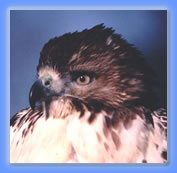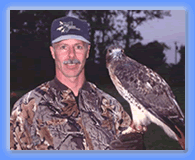
 |
||||||||||||||||||
 .
Most of these are immature passage hawks
trapped during migration under federal and state permits. Harris' Hawks are
the second most popular hawk employed in the sport in Ohio, with hybrid falcons,
Goshawks, Kestrels, and Cooper's Hawks making up the balance. Many of these
hawks are acquired via out-of-state trapping or commercial breeders.
.
Most of these are immature passage hawks
trapped during migration under federal and state permits. Harris' Hawks are
the second most popular hawk employed in the sport in Ohio, with hybrid falcons,
Goshawks, Kestrels, and Cooper's Hawks making up the balance. Many of these
hawks are acquired via out-of-state trapping or commercial breeders. 
Website copyright Ohio Falconry Association,
2001, All rights reserved.
Send website comments to the webmaster
Send comments and questions about OFA to info@ohiofalconry.org